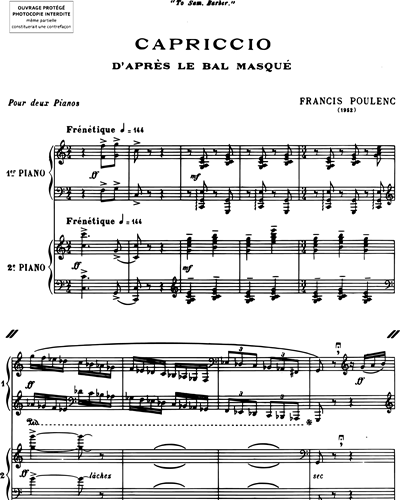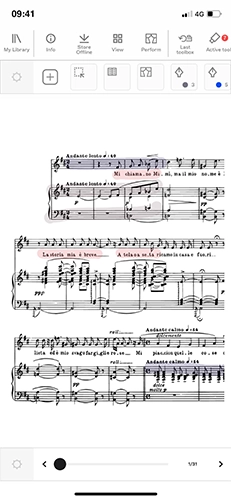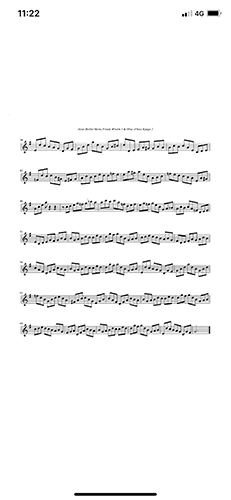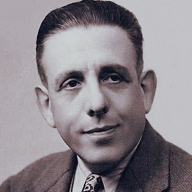
Francis Poulenc
224 pieces at nkodankoda sheet music library
over 100k editions from $14.99/month
Hassle-free. Cancel anytime.
available on
nkoda digital sheet music subscription


Editions
Annotate
Library
Perform
100k+ available Editions
More about Francis Poulenc
For centuries Parisians have taken it for granted that Paris is the centre of the civilised world. The French provinces have their points, no doubt (for one thing, they provide relief from the August heat of the capital), but in cultural matters they have never had any real influence. The provincials for their part have always regarded Paris with a somewhat wary disdain: the city, as the centre of political power, could never be ignored, but its citizens did tend to be blown about by every wind of fashion and to be consumed by a sense of their own importance. When Francis Poulenc was born in Paris on 7 January 1899, he inherited a share of both viewpoints. His mother, born Jenny Royer, came from a long line of Parisian craftsmen and brought with a strain of freethinking independence and a deep love of the arts. Poulenc’s father Emile, on the other hand, from the Aveyron district, between Toulouse and the Massif Central, was a devout Roman Catholic. This dichotomy can be seen in their son on many levels and it was one he never perhaps completely reconciled. We might even suggest that the friction between the two attitudes was responsible for generating some of his compositional energy. His mother was a talented amateur pianist and musical soirées were a regular occurrence. The young Francis preferred listening to the music from under the grand piano, except when it came to the Fauré First Violin Sonata, when he would take refuge in his bedroom. His mother was his first piano teacher and his involvement with music was to remain that of an amateur for some years. He came to love Schubert’s Die Winterreise, was impressed by the early Stravinsky ballets and even had a go at the Three Piano Pieces by Schönberg, but the decisive encounter was with a nickeloden in a Paris arcade, and with the eminent pianist Eduard Risler playing the ‘Idylle’ from Chabrier’s Dix Pièces pittoresques. From that moment the 14-year-old Poulenc knew he was going to be a composer. The years of the First World War were highly formative. In 1914 he began to have piano lessons from the famous virtuoso Ricardo Viñes, in 1915 he got to know Darius Milhaud, and in 1916 Georges Auric and Erik Satie. In the meantime his mother had died at the age of only 50 and his father followed her in 1917, before Poulenc had had any of his compositions performed. The first of these was his Rapsodie nègre for baritone and chamber ensemble, given in December 1917 and arousing more than polite interest in both Stravinsky and Diaghilev. The middle movement of the five is a setting of a nonsense poem ‘Makoko Kangourou’, which chimes in well with the dedication to Satie. 1918 saw not only Poulenc doing his National Service (in barracks) but the composition of three miniatures which gave evidence of his extraordinary gifts. The Sonata for piano duet owes something to Stravinsky, but the Sonata for two clarinets is a wholly original conception, both in respect of the medium and the use Poulenc makes of it – in 1921 Bartók wrote to Poulenc to say that he had read both works with the keenest interest. The third work from 1918 was the set of Trois mouvements perpétuels, which Viñes played for the first time in public in February 1919 and which then swept the drawing-rooms of Europe. Here the Parisian and provincial elements in Poulenc’s make-up jostle each other, with occasional attempts at coalescence: the tunes are superbly naïve (Ravel envied Poulenc his ability “to write his own folksongs”), while the little flourishes with which each piece “signs off” are the epitome of urban irony. In January 1920 the critic Henri Collet named Poulenc and five composing friends ‘Le Groupe des Six’, by analogy with the Russian Five. It was a convenient label for publicity purposes and Jean Cocteau, as their self-appointed spokesman, was quick to capitalise on the possibilities. But each of the Six always insisted that the group was just a collection of friends, with no communal musical aims. As it happened, Poulenc’s Suite in C and Impromptus for piano fit Cocteau’s prescription quite well – they are clear, light-hearted and entertaining. But the Promenades, written in 1921 for Artur Rubinstein, belong to the more serious side of Poulenc which was already struggling to make itself heard. This ten-movement celebration of different modes of transport explores a number of the new musical techniques which were intriguing composers of the 1920s, and the resulting language must have seemed difficult to pianists of the time, although now it merely appears of its period. By 1921 Poulenc was coming to feel that his musical technique needed sharpening. So far he had sensibly confined himself to short pieces for small forces, but it is interesting to find Bartók, in the letter mentioned above, saying that he looked forward to seeing longer pieces from Poulenc’s pen – as though he knew Poulenc to be capable of them, given the right guidance. This Poulenc found in the person of Charles Koechlin, a somewhat awkward figure in French musical life who never received recognition as a composer in his lifetime, but who was widely admired as a teacher. Koechlin recognised that Poulenc’s gifts were harmonic rather than contrapuntal and set him harmonising Bach chorales instead of working on fugues or canons. It is true that Poulenc’s melodies nearly always carry with them a strong implication of the accompanying harmony (something he perhaps owed to his early love of Schubert), so that although his Sonata for clarinet and bassoon of 1922 is necessarily linear in conception, we hear a continuo part in our mind, and the composer is able to play jokes by cheating our expectations. The Sonata for horn, trumpet and trombone, also written in the autumn of 1922, relies rather on the fashion of returning to styles of the past, which Stavinsky had inaugurated with his ballet Pulcinella in 1920. Carping critics have objected to what they call “18th-century music with wrong notes”, but the “wrong” notes are very carefully chosen and a comparison with real 18th-century music reveals Poulenc to have a quite different manner of phrasing and architecture; the Sonata does not really sound like Stravinsky either, so individual are Poulenc’s melodies. The last, and perhaps the most beautiful, of the chamber works Poulenc wrote in the 1920s was the Trio for piano, oboe and bassoon of 1926. We may note the order of the instruments in the title – the inclusion of the piano brings a new richness to Poulenc’s chamber textures, and he was to use it in every one of his original chamber works from this point onwards. The opening call to attention on the piano is clearly modelled on the neo-classical Stravinsky but, as the American scholar Keith Daniel says, this introduction “is subdued and serious, revealing a depth not before plumbed in the chamber music”. Poulenc was anxious to point out that the work was not simply the result of a “stream of consciousness”, but that the first and last movements were based on structures by Haydn and Saint-Saëns respectively. The central Andante shows his melodic gifts unfolding at greater length than before – one of Poulenc’s greatest slow movements. To a large extent the Sextuor for piano and wind quintet of 1932-39 continues the same preoccupations: the composer called it “a homage to the wind instruments which I have loved from the moment I began composing”. If Poulenc therefore deliberately sets out to write music which is entertaining, that does not preclude moments that touch the heart as well: between 1932 and 1939 he had regained his Roman Catholic faith and written the powerful and passionate song-cycle Tel jour, telle nuit and the ‘impertinent’ Poulenc was never again to be granted total dominion. This mixture of grave and gay can be seen nowhere as clearly as in L’Histoire de Babar for piano and reciter. One day in 1940 a young cousin put Jean de Brunhoff’s story on the piano and asked Poulenc to ‘play’ it. He duly obliged, but only wrote down the result when the same cousin repeated her request five years later. We can also hear the continuing pull between the urban/sophisticated and the provincial/childish, lending variety to this wholly enchanting work. Poulenc was never to lose his love of wind instruments, but there does appear to have been a mild rapprochement in the 1940s with the hitherto slighted strings, both in the Sonatas for violin and for cello with piano, and in orchestral works such as the Piano Concerto and, particularly, in the Sinfonietta of 1947. Although this was commissioned by the BBC to celebrate the first anniversary of the Third Programme, it is one of the least “eggheaded” of Poulenc’s pieces, as well as being his only purely symphonic work. After what Poulenc called his “second youth” (the opera Les Mamelles de Tirésias, the Sinfonietta and the Piano Concerto), in the 1950s he turned his energies chiefly to three vocal works of the utmost seriousness: the Stabat Mater, the opera Dialogues des Carmélites and the “lyric tragedy” La Voix humaine. Echoes of these, in both style and content, abound in the four works for wind instruments which brought Poulenc’s chamber music to a conclusion: the Elégie for horn and piano, and the three accompanied sonatas for flute, clarinet and oboe (he may have been going to complete the cycle with a bassoon sonata at the time of his death). All four works have memorial dedications. The Elégie was written in 1957 in memory of Dennis Brain, who was killed in a car accident that year. The sense of loss it distils is palpable, and makes it one of Poulenc’s least comfortable works, full of harsh intervals and dramatic gestures. It is as though he were determined to get as far away as possible form the dreamy, poetic horn of the 19th century, a path followed by many a contemporary composer since then. Both the Flute Sonata and the Clarinet Sonata, the latter dedicated to the memory of Arthur Honegger, follow the early chamber works in their 3-movement, fast-slow-fast patterns, with a moderate first movement of almost religious serenity, a gentle middle one in a contrasting key, and a sprightly finale. The Flute Sonata, in particular, has become a modern classic, both in its original form and in the orchestral arrangement made in 1977 by Sir Lennox Berkeley. The Oboe Sonata, written in memory of Sergey Prokofiev and Poulenc’s last work of any stature, alters the succession of movements to slow-fast-slow, ending with a ‘Deploration’ which the composer described as “a sort of liturgical chant”. It is clear from this final sonata that Poulenc was, at the time of his death, reconsidering the materials of his style. Not that he was considering becoming a twelve-note composer, despite the note-rows in the Elégie, but while remaining the tonal, tuneful composer he had always been, he was searching for new ways of putting his ideas together. Like his friends Honegger and Milhaud, he had the courage to resist the serialists’ diktats and remain true to himself. Now that the serialist terror has passed, those of us who love Poulenc’s music can hold up our heads in the most sophisticated company, while never forgetting the earthy, provincial roots, which give his works their strength and endurance. And if it all seems so simple, we should remember the long maternal line of craftsmen that stands behind him – for him, as for them, the art consists in concealing the artifice. (Text by Roger Nichols, 1992)

Francis Poulenc sheets music on nkoda
Edition/Parts
Composer/Artist
Part
Source
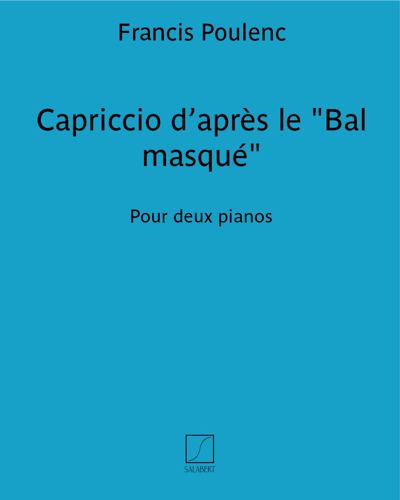
Capriccio (After 'Le Bal masqué')
Francis Poulenc
Piano
Salabert
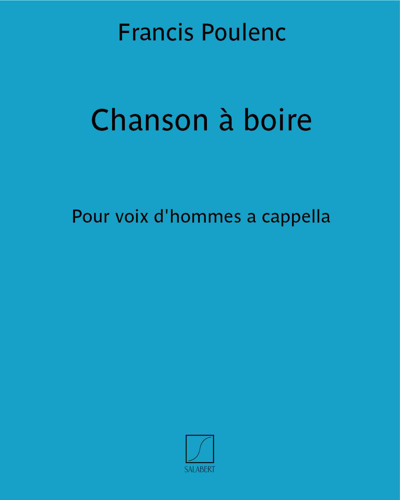
Chanson à boire
Francis Poulenc
Male Chorus
Salabert
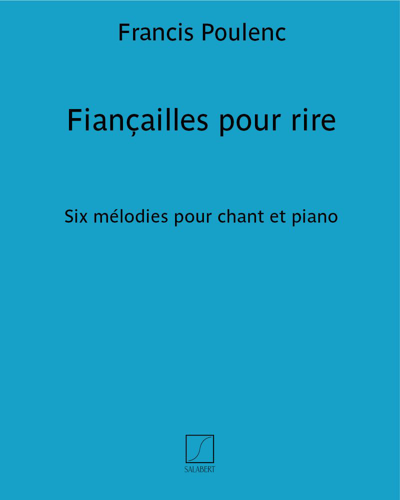
Fiançailles pour rire
Francis Poulenc
Piano, Voice
Salabert
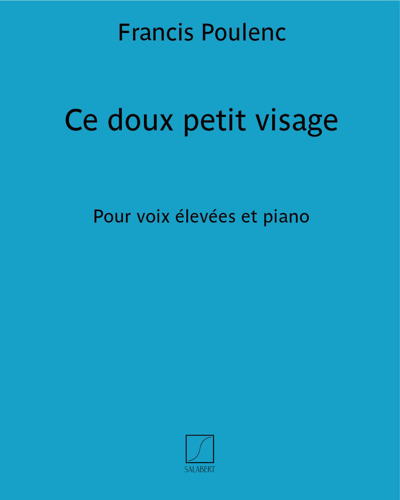
Ce doux petit visage
Francis Poulenc
Piano, High Voice
Salabert
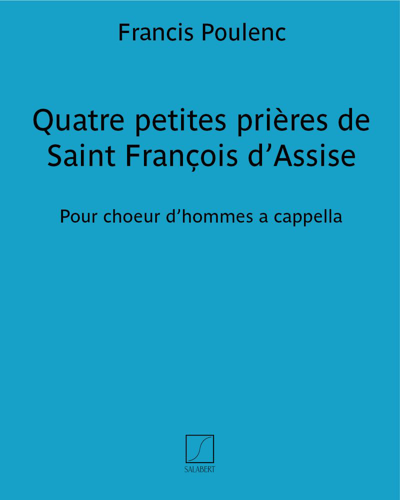
Quatre petites prières de Saint François d'Assise
Francis Poulenc
Male Chorus
Salabert
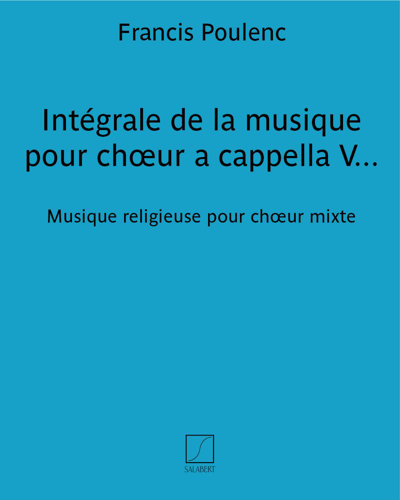
Intégrale de la musique pour chœur a cappella Vol. 2
Francis Poulenc
Mixed Chorus SATB
Salabert
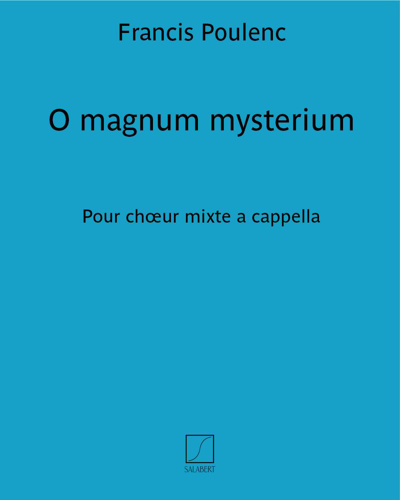
O magnum mysterium (n. 1 de "Quatre motets pour le temps de Noël")
Francis Poulenc
Mixed Chorus SATB
Salabert
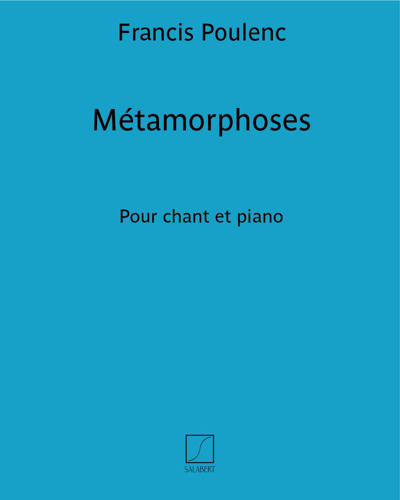
Métamorphoses
Francis Poulenc
Piano, Voice
Salabert
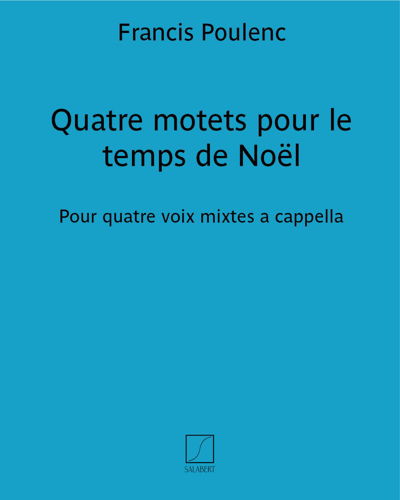
Quatre motets pour le temps de Noël
Francis Poulenc
Mixed Chorus SATB
Salabert
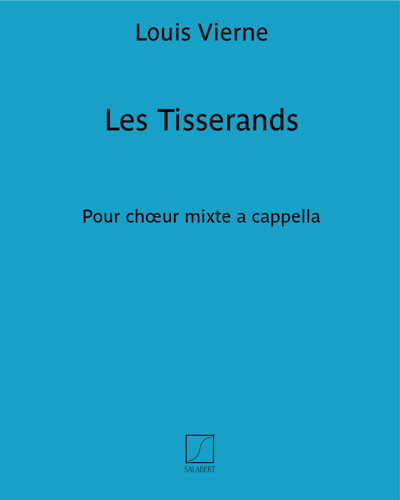
Les Tisserands (n. 8 des "Huit chansons françaises")
Francis Poulenc
Mixed Chorus
Salabert
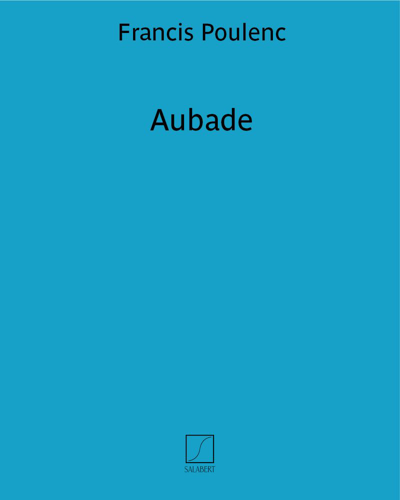
Aubade
Francis Poulenc
Piano & Full Score
Salabert
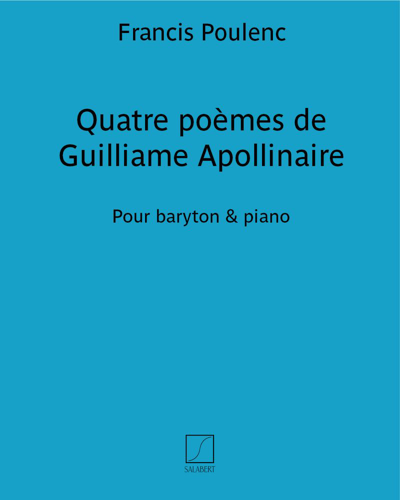
Quatre poèmes de Guilliame Apollinaire
Francis Poulenc
Piano, Baritone
Salabert
INSTITUTIONAL PARTNERS
PUBLISHERS PARTNERS
TESTIMONIALS


